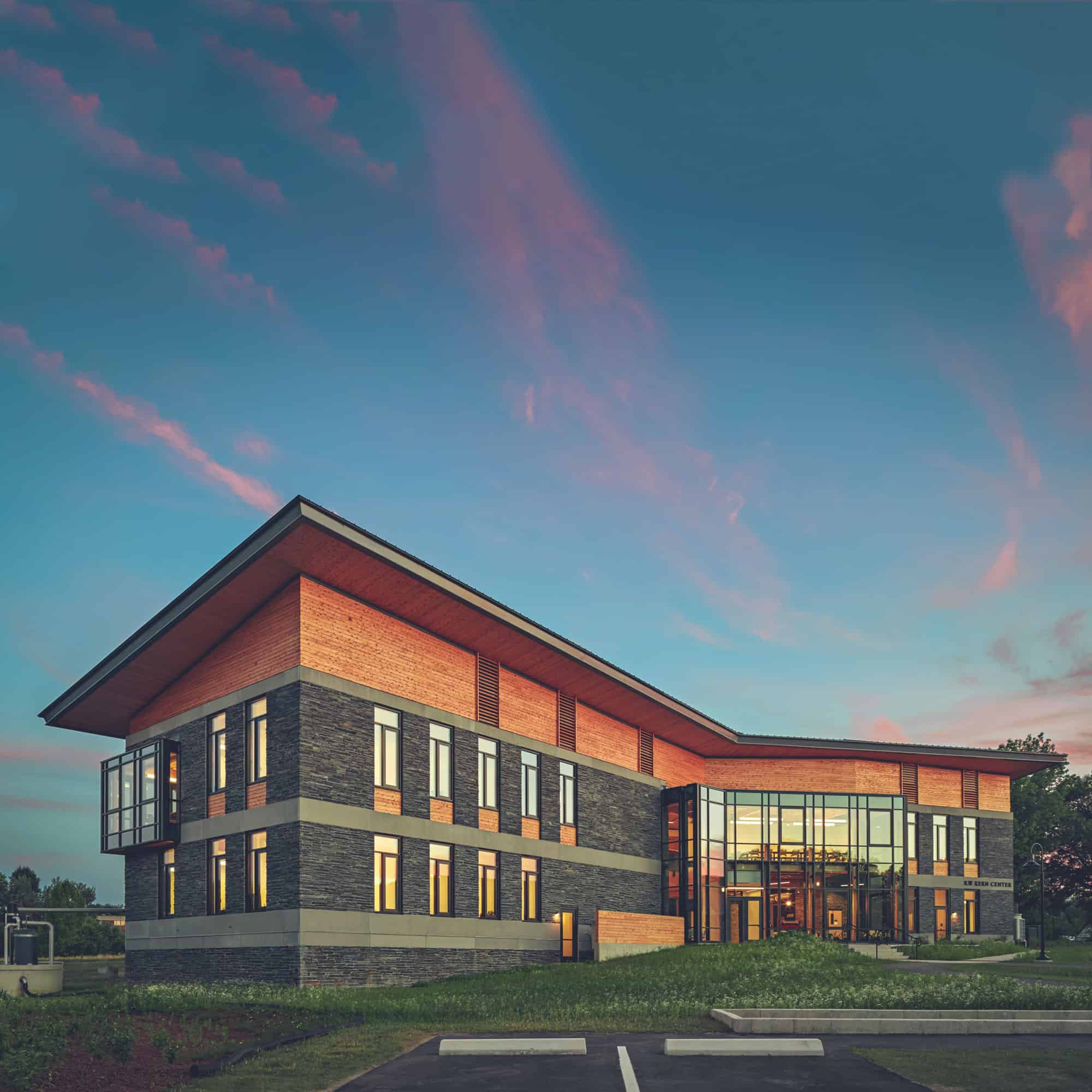Jonathan Wright spoke clearly and succinctly to a crowd gathered in a sparkling new building on the campus of Hampshire College. He recounted the first time he had visited the school.
“A 16-year-old boy arrived at what was not yet a campus of what was not yet a college,” Wright said. “Dire predictions as to his future held sway at times but did not endure. None of that mattered, because the people of Hampshire then, as now, befriended him.”
It is fitting that Wright was speaking at the dedication of a building intended to welcome new and potential students to Hampshire College for generations: The R.W. Kern Center. Wright and his company, Wright Builders, served as the general contractor on the project. We caught up with Wright to discuss what made the project so rewarding, and why building to last is so important.

Why Build to Last?
The R.W. Kern Center was built as a Living Building Challenge project and intended as a sustainable building not just for the near future, but for the long-term future of the college. The intended building service life is 100-plus years. Building with both those ambitious goals in mind was a challenge for Wright.
“It’s a very deep experience to build (the Kern Center) because we know that we’ve done everything we can,” Wright said. “The materials, the systems so that it can have a 100-year service life and never require public water, never require net electricity. What an idea.”
Wright believes projects like the R.W. Kern Center shouldn’t be a rarity as they are today.
“Service life needs to be lengthened,” Wright said. “A hundred–year service life should be standard; while remembering that for institutional purpose the replacement cost needs to be spent every 25 to 40 years to stay abreast of technology and maintenance.”
How to Build to Last
As for how to achieve a 100-year service life in a building, Wright says the details are critical and the designers and builders have to prepare for the worst.
“Design must be focused on accommodating weather and climate change, seismic activity, severe weather events, and above all, the ability of the building to survive its systems failures,” he says. “Failures are about water mostly. Products that manage water and vapor are critical as they allow us to use renewable materials like wood and have them ready for a very long service life in difficult conditions.”
An Ongoing Legacy
When the R.W. Kern Center opened its doors in the fall of 2016, they welcomed Wright to help them dedicate the space. He recited a poem, urging the students in attendance to “befriend the future,” to embrace it.
Thanks to the vision of Hampshire College, the design from Bruner/Cott Architects and the attention to detail from Wright and Wright Builders, the R.W. Kern Center should endure. Who knows, it may even inspire the next 16-year-old kid with a cloudy future to become an architect or a builder with a dream of making his or her buildings last longer.
![]()